Disclosure: Kansas Pork sponsored this post. Opinions are my own.
When you think of prime rib, you may not immediately think of pork, but the pork prime rib roast is one of my favorite cuts on the pig.
The cut comes from the upper back area. It includes the loin section along with baby back ribs. When cooked slow and low to the proper internal temperature, it’s juicy and definitely worthy of any holiday table.
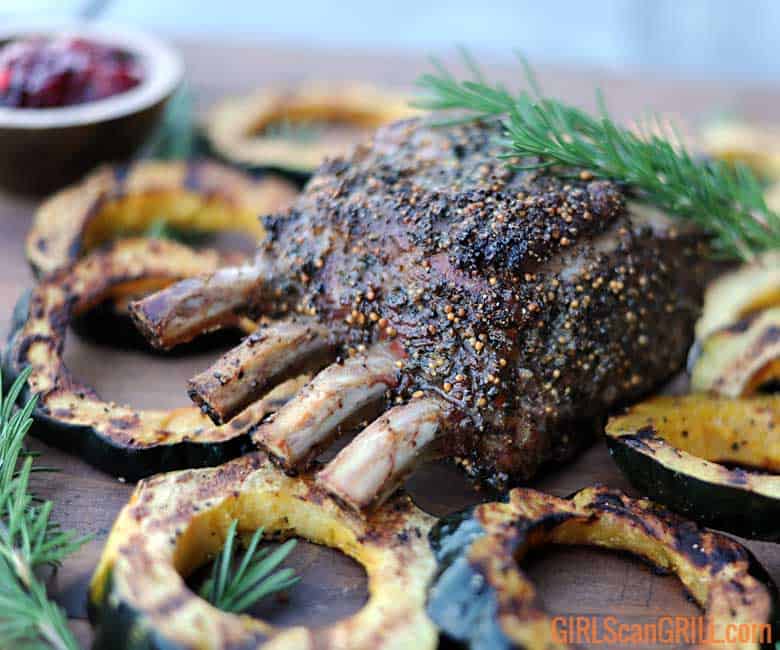
Save this BBQ Tip
Enter your email, and I’ll send this link directly to your inbox. Plus, you’ll get new BBQ recipes and tips weekly.
To make it even better, the reverse sear method delivers an irresistible, savory crust. While reverse searing may sound fancy, it’s just a simple way of saying, crank up that heat at the end.
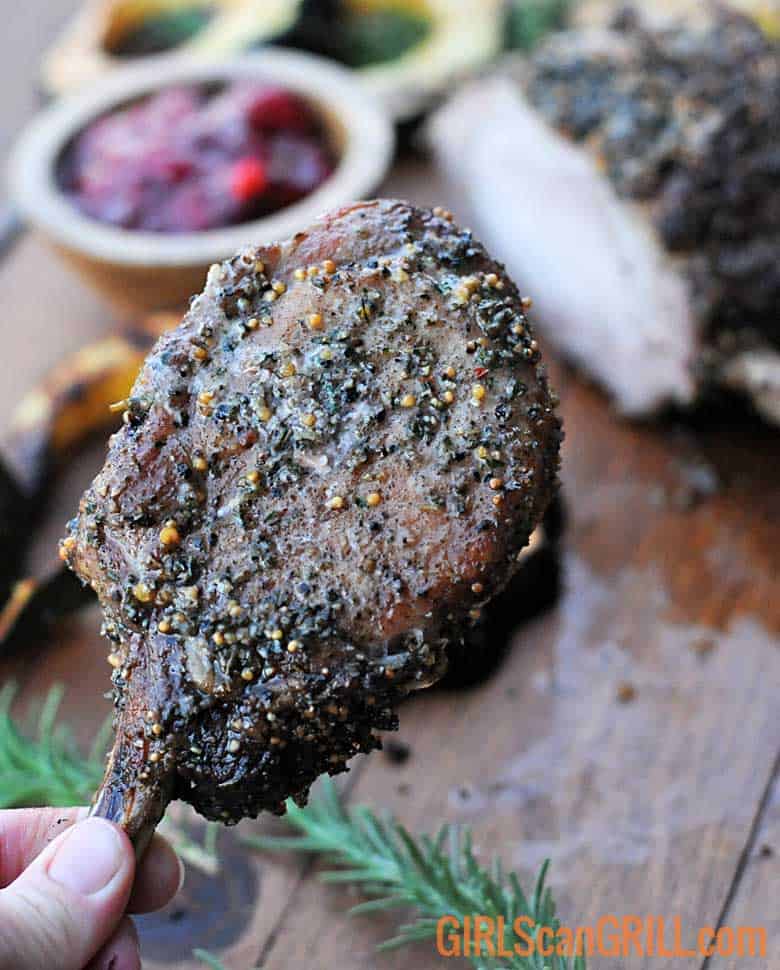
Whenever you reverse sear meat, you should hold back your temp by about 20-30 degrees, during the first cooking stage. For pork, the final magic number is 145F degrees.
So you’ll start with a low cook to 120F degrees before raising the heat to create that bark.
How to French the Bones
When cooking a roast like this, take the time to show off your butchering skills by stripping the excess meat from the bones. The proper term for this technique is “Frenching.”
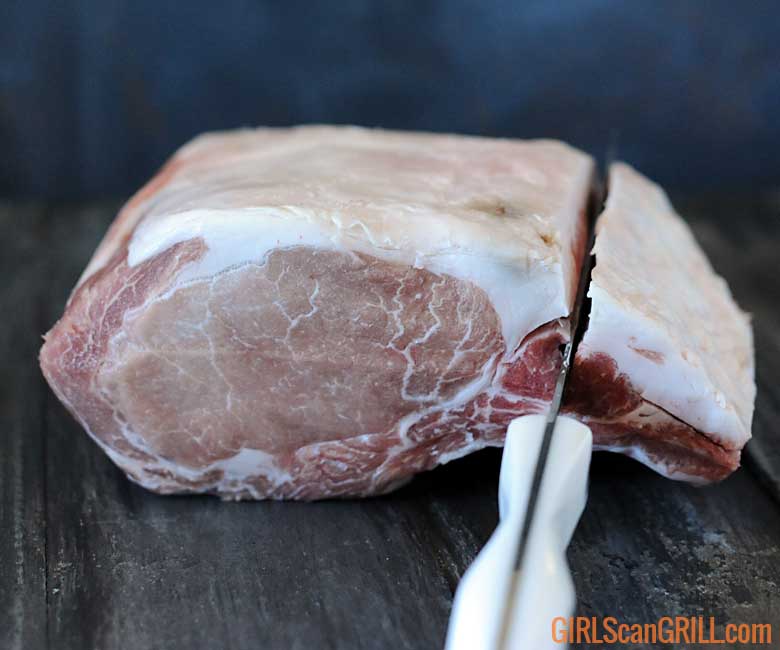
Start by finding the point where the bones meet the thick part of the roast, and slice down from the top to the bone.
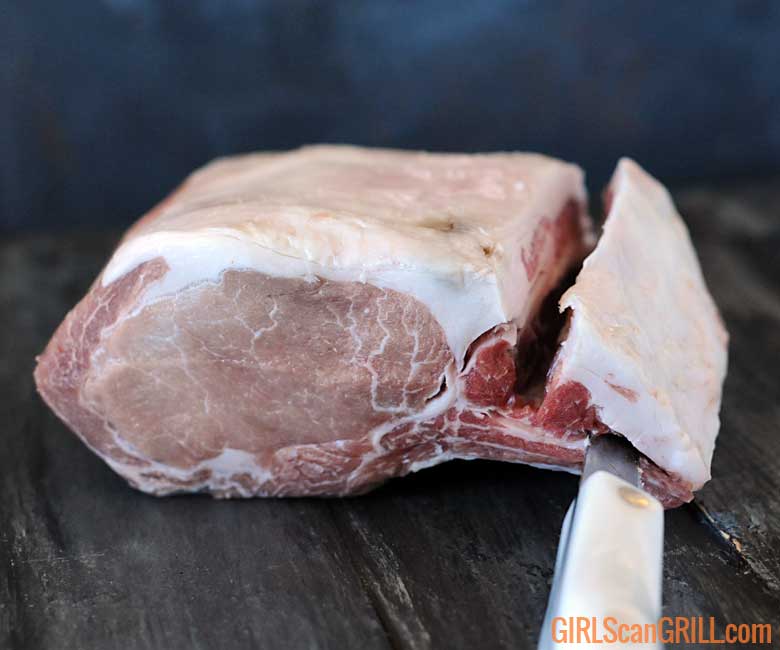
Next, run your knife along the bone to trim off that cap of meat.
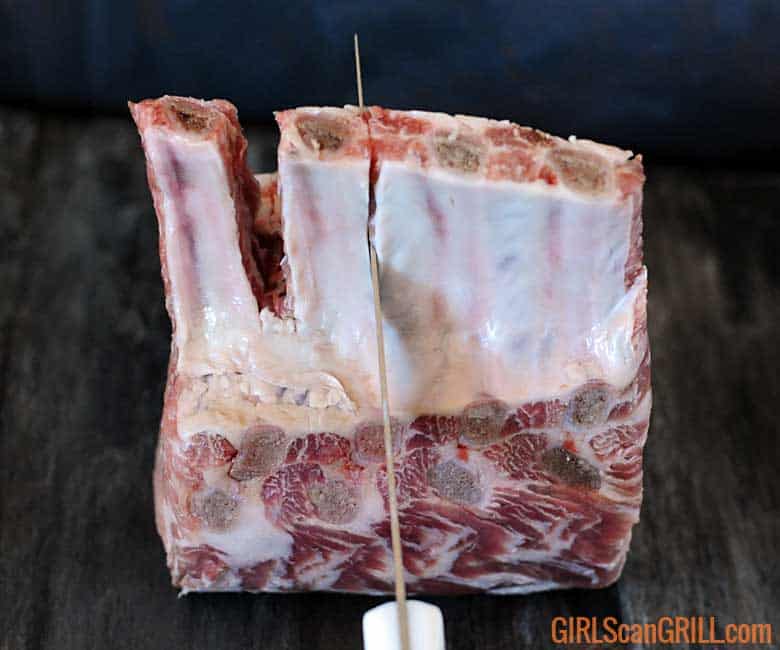
Now, run your knife down each bone to trim out the meat between the bones.
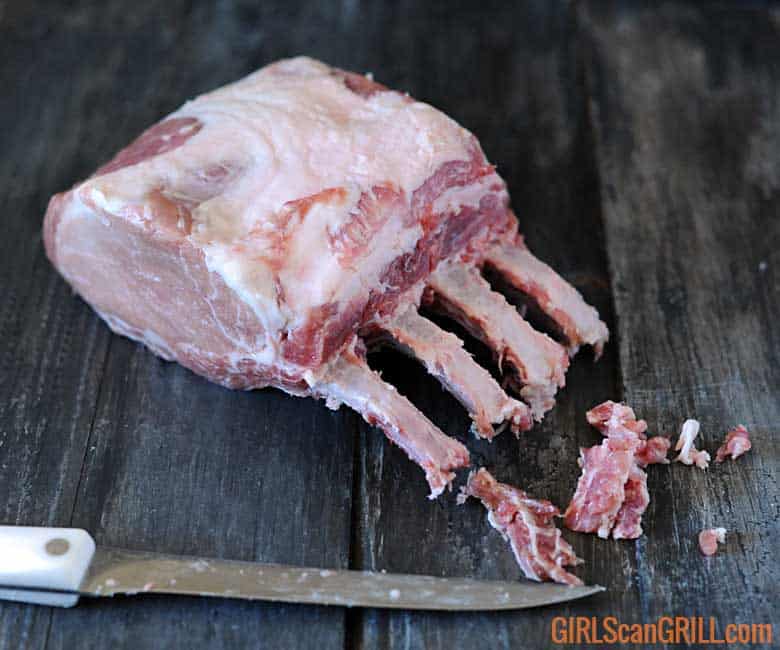
Finally, scrape off the excess meat around the bones. I find using a pair of scissors can help you get the bits on the end.
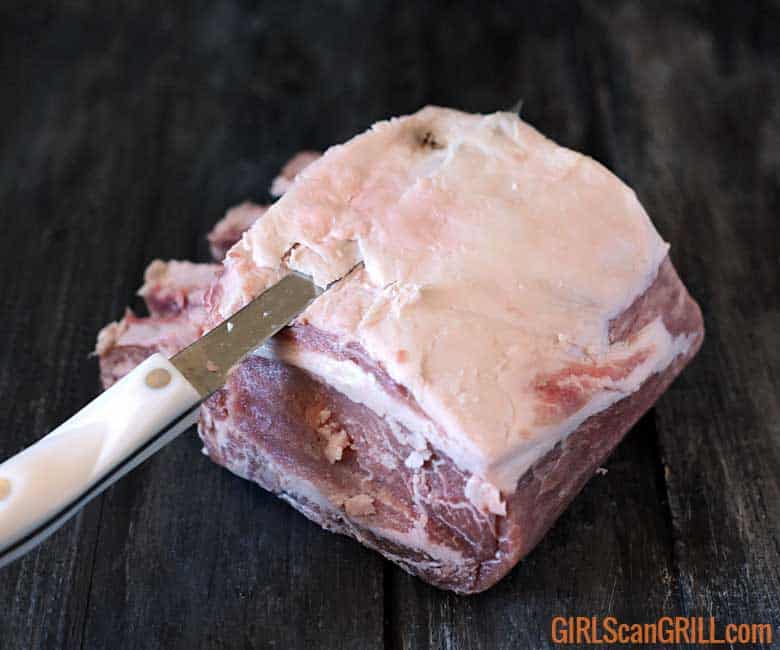
Then, remove the excess fat on the top of the roast. You want to keep about 1/4-inch attached for flavor, but if the roast has more than that, just trim it off. Otherwise, the fat cap will block the delicious herb rub.
Season the Pork Prime Rib Roast
You can follow this cooking method using any rub, but I prefer an herbed mustard seed rub. The mustard seeds provide added crunch while the herbs give the roast a robust, savory note.
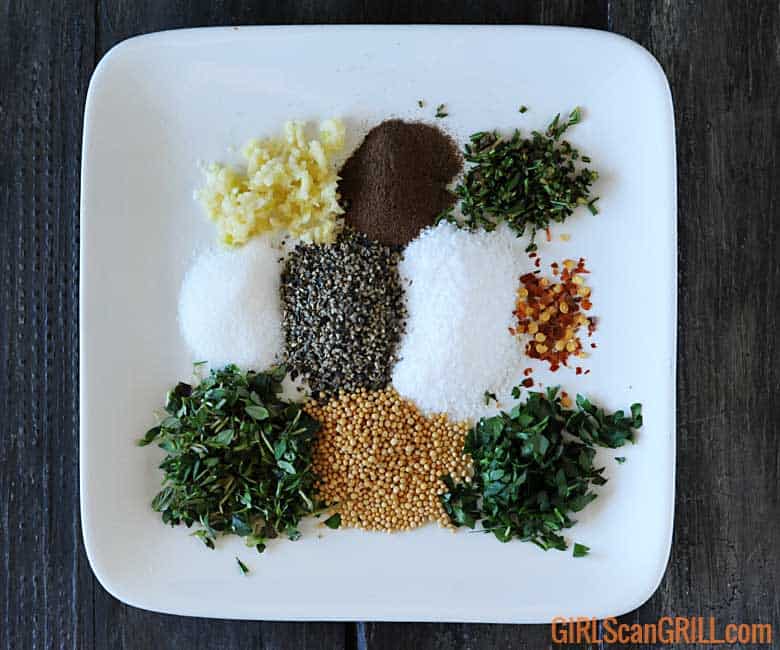
Combine fresh thyme, parsley, rosemary and garlic with mustard seeds, salt, pepper and pepper flakes. Add a bit of sugar to tone down the herbs and some allspice for that touch of fall.

Pulse everything together in a food chopper and add olive oil to create a paste.
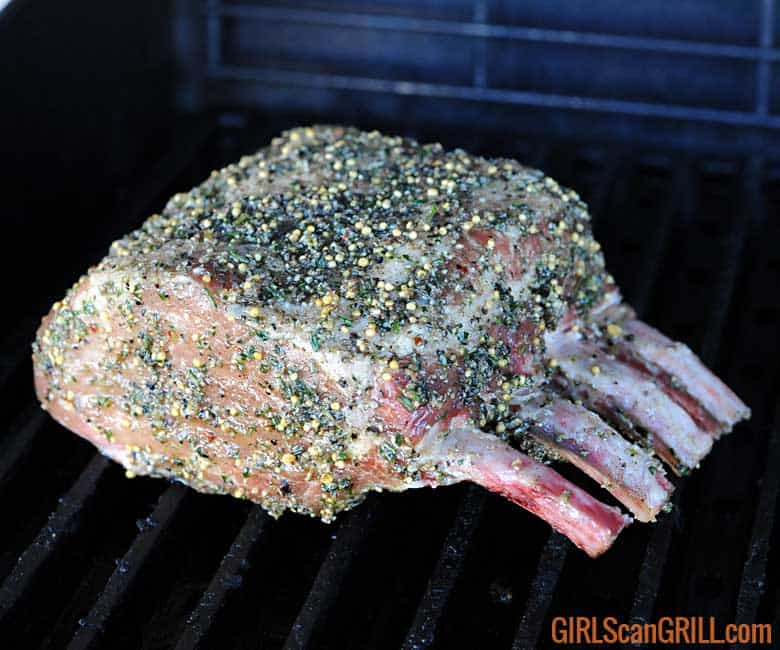
Rub the herb blend all over the roast and let it rest at room temperature for two hours. You can also do this in advance and keep it in the fridge overnight.
Grill over Indirect Heat
You can grill the pork prime rib roast on any type of grill – gas, charcoal or pellet – just make sure you’re cooking over indirect heat.
Gas grill: Only turn on 1-2 burners, and place the meat over the part of the grill where the burner(s) are turned off.
Charcoal grill: Push the coals to one side, and place the meat over the coal-less section.
Pellet or kamado-style grill: Be sure the diffuser plate is installed to block the direct heat from the meat.
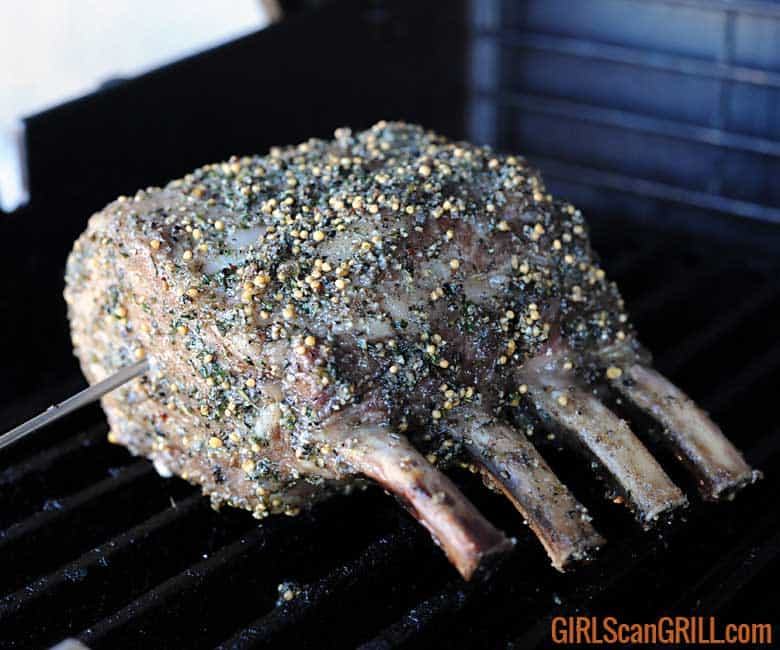
In all grill setups, you want to adjust the heat to 250F degrees.
Gas grill: Turn your knobs, until you can balance out the heat to that temp.
Charcoal grill: Adjust your vents and exhaust.
Pellet grill: Push the button to set the heat.
Once the grill is pre-heated, set the roast over indirect heat and cook to an internal temperature of 120F degrees. This will take 1 hour and 30 minutes to 1 hour and 45 minutes.

Now it’s time to create that crunchy seared crust. Crank the heat to 400F degrees.
Gas grill or pellet grill: Simply adjust the dials or the temperature setting.
Charcoal grill: It will take a little more time to increase the heat. Go ahead and open your vents up all the way, until the temp climbs. If it starts to get too high, just close them down a bit.
Continue cooking to an internal temperature of 145F degrees. This is the perfect temp for pork to ensure it’s super juicy.
While the pork is searing, throw some acorn squash slices on the grill. I season them with oil, salt, pepper and nutmeg. They only take about 10 minutes per side to char and soften.
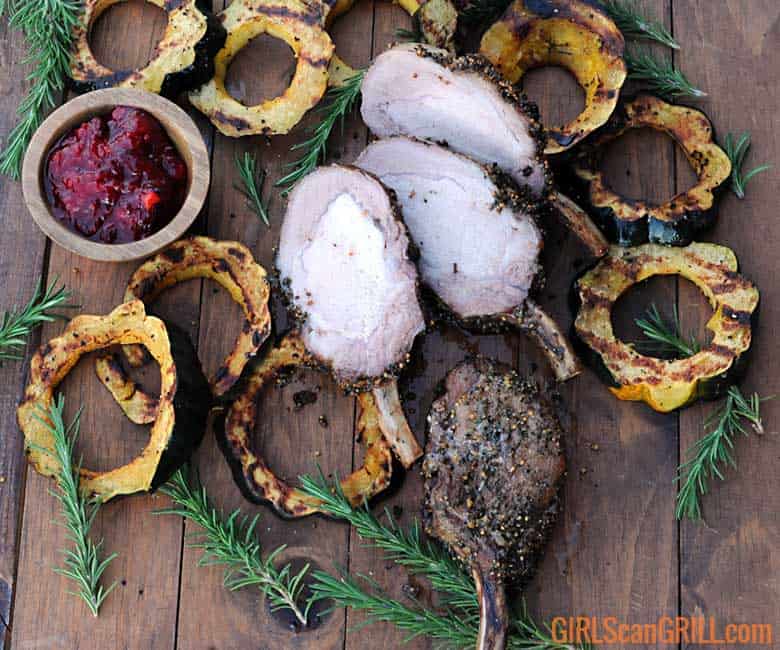
Once the pork reaches 145F degrees, remove it from the grill, and let it rest at least 20 minutes. This allows the juices to redistribute into the roast.
Slice and serve alongside the squash. It goes great with cranberry sauce, too.
Save this BBQ Tip
Enter your email, and I’ll send this link directly to your inbox. Plus, you’ll get new BBQ recipes and tips weekly.
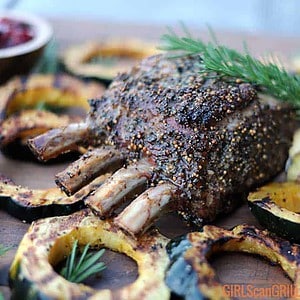
Reverse Seared Pork Prime Rib Roast
Ingredients
- 3 lb pork prime rib roast
Herbed Mustard Seed Rub
- 3 cloves garlic
- 1 tbsp kosher salt
- 2 tsp black pepper
- 1 tbsp fresh thyme
- 1 tbsp fresh rosemary
- 1 tbsp fresh parsley
- 1 tsp mustard seeds
- 1 tsp sugar
- 1/2 tsp ground allspice
- pinch red pepper flakes
- 3 tbsp olive oil
Instructions
Prepare the Rub
- Place all of the rub ingredients except for the olive oil into a food chopper. Pulse to chop. Add the olive oil. Pulse a few more times to combine.
Grill the Roast
- French the bones (see above for instructions).
- Rub the herbed mustard seed rub all over the roast. Let rest for 2 hours.
- Heat the grill or smoker to 250F degrees with an indirect heat setting.
- Grill the pork prime rib roast over indirect heat to an internal temperature of 120F degrees. This will take 1 hour and 30 minutes to 1 hour and 45 minutes.
- Crank the heat to 400F degrees, keeping the roast over indirect heat. Cook to an internal temperature of 145F degrees. This will take about 30 minutes.
- Remove from the grill and rest for 20 minutes, before slicing.
Nutrition
Nutrition information is automatically calculated, so should only be used as an approximation.
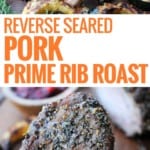
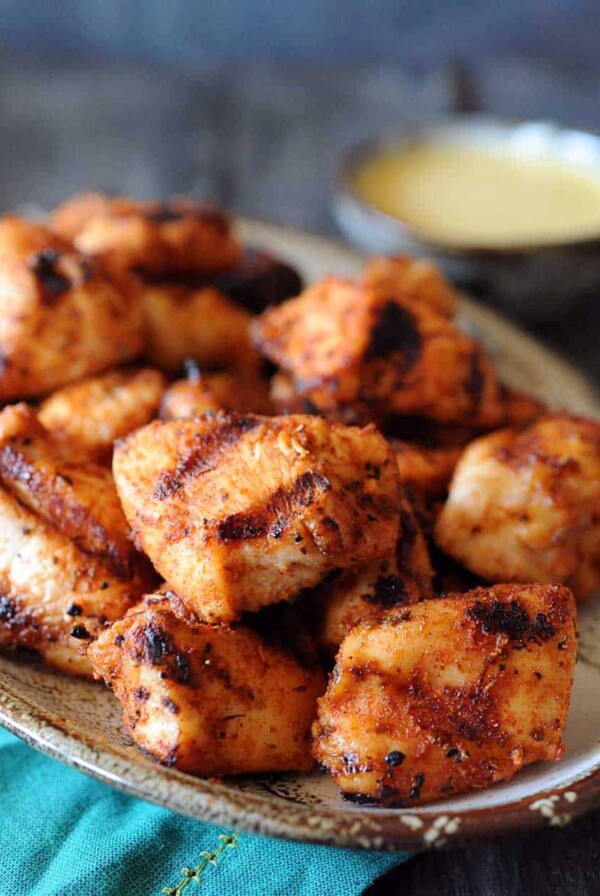

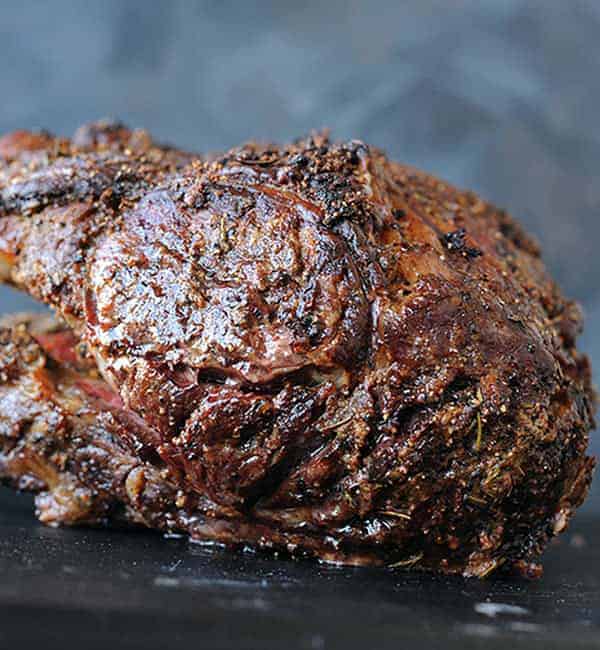
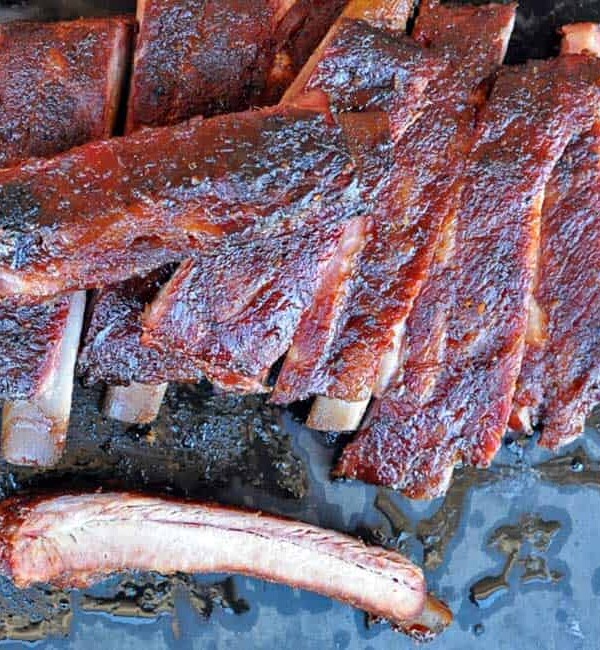
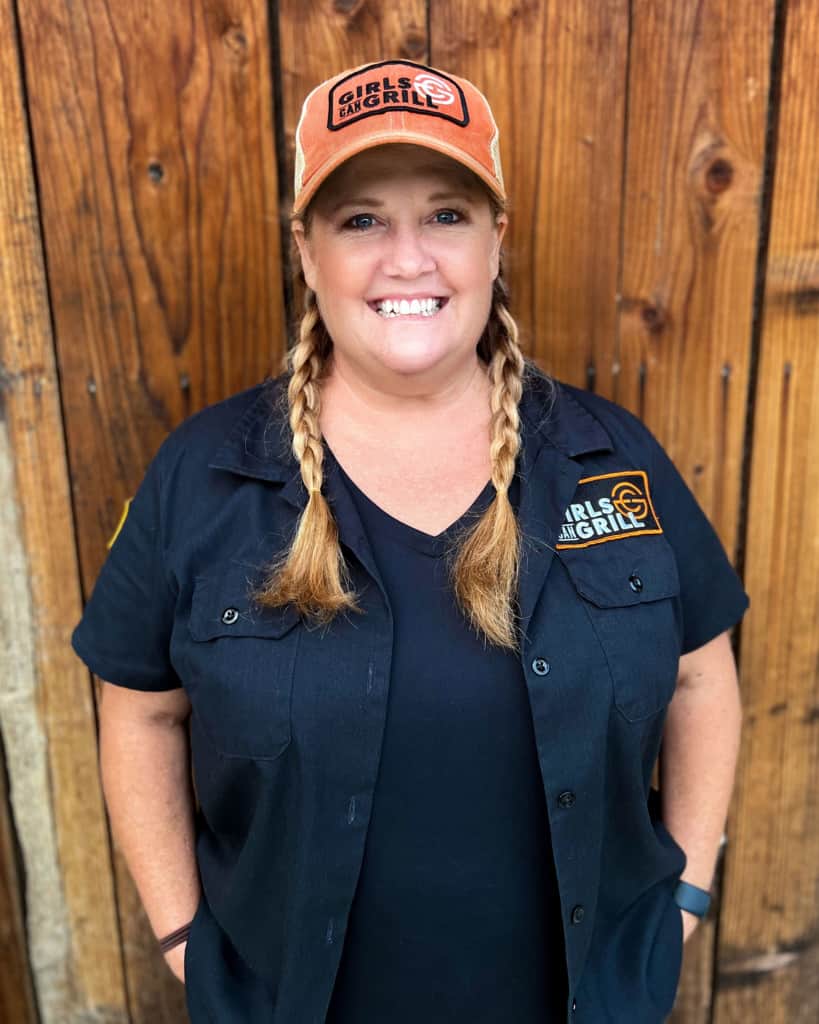








Wow! This dish looks fantastic and I love how much detailed preparation you have given us. Looking forward to trying this at our next company BBQ.
Made this for my Christmas dinner with friends. Rave reviews!!! Now to try this with a prime rib
Watch very carefully at the end – the fat could ignite!😖
I did this in our pellet smoker and it turned out fantastic! I didn’t have mustard seed so I used whole grain mustard. The pork was super tender and really tasty. Made the grilled acorn squash, brussel sprouts and served it with homemade applesauce. I will cut down on the salt next time but otherwise this recipe is a keeper!
EXCELLENT!!